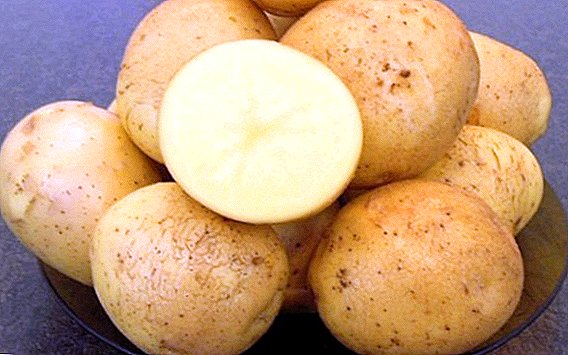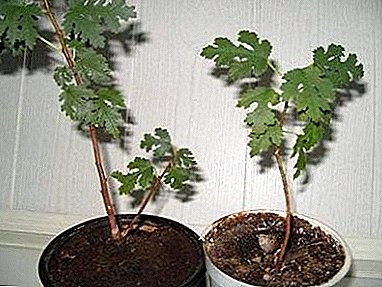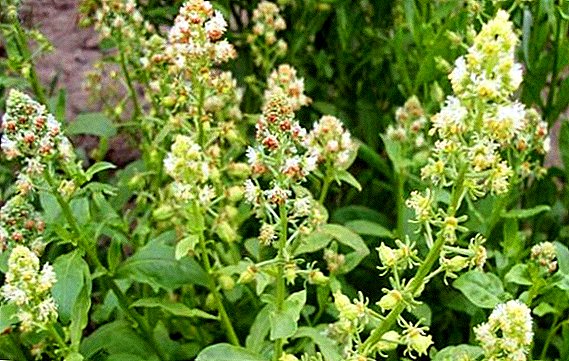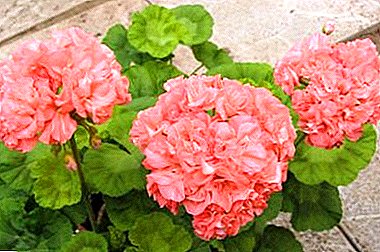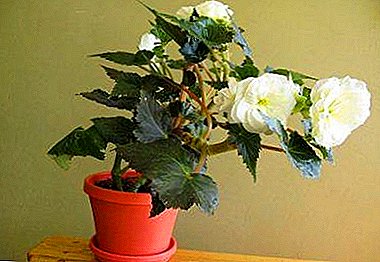
Begonia is an excellent ornamental plant that can be grown in an outdoor garden or at home on a windowsill.
Bushes of a small size with bright leaves and beautiful buds can be an ornament from late spring to early autumn - exactly until this flower hibernates.
To delight and admire the luxury of its flowering begonia will be more than one year, if you responsibly treat its storage in the off-season and ensure proper care for the flower in winter.
Features of growth during wintering
From the beginning of November to the end of February, begonia is at rest: at this time it is gaining strength after an active growing season, i.e. flowering and active development. Its growth will depend on how this plant “overwinter”, therefore it is important to provide all the necessary conditions for this: significantly reduce watering, stop fertilizing begonia, greatly reduce illumination - all of which will be discussed below.
If during the period of rest any of the conditions is not met, then there is a high probability that it will not bloom when the time comes for this, because it simply will not be able to replenish all reserves and gain strength.
How to care at home?
Begonia is a heat-loving plant, so its preparation for winter and flower care is an important task., requiring urgent solutions, because of how the rest period will pass, its further flowering depends.
But it is also important to provide the conditions for this plant if it is grown at home. If the begonia, which has large tubers, has flowered in a pot, then for the winter it can be left in it.
How to take care of begonia after a purchase can be found here, and here you can read about what care a flower growing in a pot needs.
Watering
In winter, watering is less frequent than in summer or spring.however, one should not allow overdrying of the substrate, because it is fraught with the tuber dying off, and stagnant moisture at the bottom of the pot - rotting.
Temperature and humidity
 Begonia remaining in its pot for the rest period may be in a room with room temperature, but the coolest place in the apartment (balcony) or house (basement) would be the best option.
Begonia remaining in its pot for the rest period may be in a room with room temperature, but the coolest place in the apartment (balcony) or house (basement) would be the best option.
But, as a rule, with the beginning of the heating season the air in the apartments becomes dry. The containers with germinated tubers are installed closer to the light, watering is limited, the temperature of the content is about 18 ° C. Tubers sprout slowly and unevenly. First of all they take root.
Flower growers recommend spraying the air around the plant with a sprayby avoiding a lot of moisture on its leaves.
Top dressing
Fertilizer plants need to be made only during the growing season (from late spring to early autumn), and in the fall and winter it is not necessary, unless, of course, the grown type of begonia is not flowering in winter. In this case, you need to feed the begonia 1 time per week with a solution of mineral concentrate.
Lighting
This plant, like many others, does not like direct sunlight on it, even during the flowering period, so during dormancy it is necessary to ensure twilight or very small ingress of diffused light (it all depends on where the plant is located).
Pruning
In October, the begonia stops flowering and dying off of the aerial part begins., and at this particular time, it is necessary to leave 1–2 cm of the shoots, carefully cutting them with sterile scissors, as soon as it becomes clear that the plant does not bloom anymore.
As soon as the begonia leaves fall, it is necessary to stop its watering!
How to save a flower in the apartment?
From the very beginning of November and until the end of February, the begonias are at rest, i.e. gain strength after flowering. And during this period, tubers of different sizes are stored differently:
- Young tubers sprung from seeds should be in a moderately lighted and cool place, they need sparse watering. But if it is not possible to dig a small tuber, then it can also be left in a pot, while cutting off the ground part.
- Large tubers that have flowered in pots, after the shoots have dried out, remain in them and are placed in a cool place, their dried above-ground part is cut so that 1 to 3 cm remains.
- Begonias that bloom in the open ground, after digging (this should be done after flowering), are placed in storage in dry peat or sand and cleaned in a cool place, and at the end of the rest period are taken for germination.
The probability of drying of young tubers of a small size is greatly increased if they are stored in the conditions prescribed for large tubers. Therefore their It is recommended to pull out the tubers of the container in which they grew and place in dry soil or sand.
Can you help meet the spring?
 In March or early April, a home-grown plant begins to wake up, so during this period it can be moved to a cool window-sill, where it will get used to bright lighting, while avoiding northern window-sills.
In March or early April, a home-grown plant begins to wake up, so during this period it can be moved to a cool window-sill, where it will get used to bright lighting, while avoiding northern window-sills.
After a few days, you can begin to increase the amount of water during watering. It must be at room temperature, settled. At this time, while begonia gets used to new conditions, its tuber will begin to germinate, and it will gradually begin to bloom. This is all you need to do to help wake up a flower if it has wintered in a pot. How to grow, water and care for begonia, so that it blooms longer, we told here.
If in winter the plant tuber was stored in the soil or sand, it should be planted for germination.: planting in containers with a wet substrate according to the 5x5 scheme, or immediately in individual pots (how to choose a pot and plant a begonia, read here). Boxes or pots where tubers are germinated should be watered moderately and placed in a room with a temperature of 16-17 degrees.
It is possible to replant germinated tubers in open ground only when the stem grows and leaves appear on it, i.e. after about 2 - 3 weeks.
It is best to calculate the time so that the tubers sprout by the time the spring frosts should end.
In the dormant period, begonia requires absolutely no attention at all.therefore, it is very easy to make you happy with its bright and elegant colors next year. And it doesn't matter who does it: a newbie in this business or an experienced gardener.


